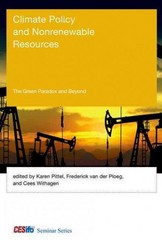Question
The factor-endowment theory predicts that because the United States is relatively abundant in capital and relatively scarce in labor, it will export capital-intensive goods, and
The factor-endowment theory predicts that because the United States is relatively abundant in capital and relatively scarce in labor, it will export capital-intensive goods, and its import-competing goods will be labor intensive. In the 1950s, Wassily Leontief, a Russian-American economist, tested this proposition by analyzing the capital/labor ratios of export industries and import-competing industries, using U.S. data. He found that the capital/labor ratio for U.S. export industries was lower than that of the United States' import-competing industries, which means that U.S. exports were less capital intensive than import-competing goods. These findings appeared to contradict the predictions of the factor-endowment theory and became known as theLeontief paradox.
Replicate Leontief's test using the data shown in the following table. Compute the capital/labor ratio for exports and imports, and enter each value in the last column of the table.
Used to Produce $1 Million Worth of . . . Capital Labor Capital/Labor Ratio
(Dollars) (Person-years) (Dollars per person-year)
Exports 1,800,000 80 ___________
Imports 3,000,000 100 ___________
The numbers in the previous table show that U.S. exports are ______________, and U.S. imports are _______________ .
What do the results of your test illustrate?Check all that apply.
___________-The Heckscher-Ohlin theory
____________The Leontief paradox
Which of the following explanations resolve the Leontief paradox?Check all that apply.
___________Leontief used the data on U.S. technology to calculate amounts of labor and capital used to produce imported goods.
___________The data Leontief used could have been influenced by World War II.
___________Leontief wrongly assumed that the United States was abundant in land.
___________U.S. and foreign technologies are not the same.
Step by Step Solution
There are 3 Steps involved in it
Step: 1

Get Instant Access to Expert-Tailored Solutions
See step-by-step solutions with expert insights and AI powered tools for academic success
Step: 2

Step: 3

Ace Your Homework with AI
Get the answers you need in no time with our AI-driven, step-by-step assistance
Get Started


